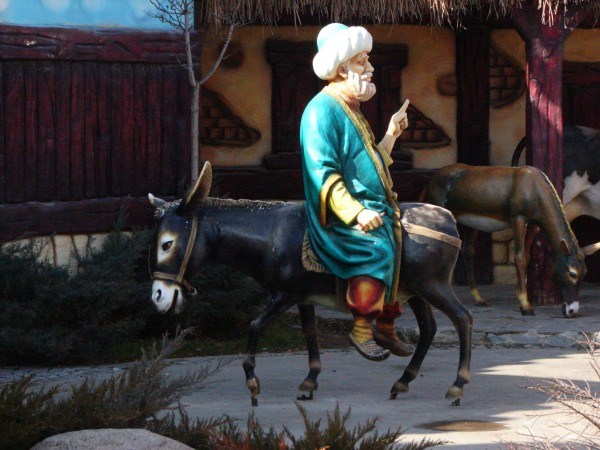In his interview with the Religious Studies Project, Milad Milani gives a thoughtful overview of the tradition of Sufism, answering big questions such as: what is Sufism, how did it emerge historically (see Milani 2013), and how is it configured in contemporary Western discourses? As Milani astutely indicates at various points throughout the interview, the complexities of Sufism (if one can even speak of Sufism in the singular) make it quite difficult to pin down straightforward answers to these questions. In other words, there is no single set of doctrines and practices that define Sufism as such; there is no single figure, group, or place in which Sufism emerges; and, there are a number of different contexts in which Sufism is being deployed in contemporary discourses. However, by attempting to unpack some of these complex questions Milani provides substantial insight into how the population in general ought to think about Sufism, how scholars can approach the academic study of Sufism, and how Sufism relates to the Islamic tradition as a whole. Perhaps most importantly in my opinion, his continual recognition of the multiplicities of Sufi traditions is critical for the academic study of Sufism insofar as it counters many of the popular narratives of global and universal Sufism, and provides a context for considering the plurality of the Islamic tradition and the contestations that continually constitute it.
As with most discussions of Sufism, the interview begins with the question ‘What is Sufism?’ Milani’s answer is that, primarily, Sufism is a form of Islamic mysticism that emphasizes central aspects of the Islamic tradition and seeks to cultivate an experience of ultimate unity or oneness with the divine. From this definition we can derive two important features of Sufism – one doctrinal and the other practical. In terms of doctrine, this notion of oneness was most clearly elaborated by the twelfth-century Andalusian mystic Ibn al-Arabi who proposed the concept of wahdat al-wujud (‘oneness of being’). The basic premise of this doctrine is that all created things are essentially reflections of God and that therefore God (or Truth – al-Haqq) is present in all things in this world. Today we may call this a kind of pantheism and this affront to the transcendence of the Divine was a main point of tension with normative Islam at the time. However, I highlight this doctrinal component here not because I want to suggest that all Sufis upheld it or interpreted it in precisely the same manner. Instead, I point to it in order to bring out some of the key doctrinal components underlying Sufism because I felt that perhaps too sharp a line was drawn in Milani’s interview between ‘mainstream’ Islam as doctrinal and Sufism as experiential. In other words, there are complex theological doctrines within Sufism, making the doctrinal-experiential differences difficult to render in any straightforward manner.
The second component is the practical dimension, and by that I mean the spiritual techniques for experiencing the divine, which Milani discusses briefly in relation to the ‘aesthetic’ components of Sufism, as well as what might be called the ethical ‘technologies of the self’ (to borrow a term from Foucault). With regard to the former, we have the primary practice of sama’, that is, a ritual practice of ‘audition’ that generally involves the recitation of poetry, the invocation of the names of God (dhikr), and rhythmic bodily movements performed in groups that lead people to an ecstatic experience in which one experiences the dissolution of the self in the face of the Divine (see Frishkopf 1999, Shannon 2006). The actual details of this practice vary greatly across Sufi orders (tariqa), but this is a central practice in much of the Sufi world. In relation to the ethical side, the ethical techniques are critical to Sufism and function not only to develop one’s relationship to the Divine, but also to develop one’s relationship to oneself and one’s community (see Silverstein 2012, Waugh 2008). This practical dimension of ethical Sufism is important because many discussions of Sufism revolve solely around the individual’s relationship to God, a tendency that I heard in Milani’s interview as well. My point, however, is not to criticize him for omitting a discussion of Sufism as an ethical tradition since there is only so much that can be said in such a limited amount of time. Rather, I want to stress that in many ways Sufism is not merely a form of asceticism, i.e., not simply a rejection of the material world, because embedded within the ethical tradition is the need to be involved in an ethical community in order to reach ‘perfection.’
The emphasis on community can then be connected to the formation of Sufi orders called tariqat (sing. tariqa), which in many ways defined classical or medieval Sufism. The tariqa is named after a particular founding saint or ‘friend of God’ (wali Allah) who often gains his/her status through esoteric knowledge, performing miracles (karamat), receiving God’s blessing (baraka), and a spiritual genealogy (silsila) (on sainthood see Ewing 1997, Stauth 2004, Sedgwick 2005). Individuals then enter into discipleship with these types of figures who guide the apprentice along his/her spiritual path, and the group of disciples that enter into this relationship constitute a particular manifestation of the tariqa at a given time, though at any point in history an order can be several generations removed from the founding figure. Some contemporary scholars have argued that, especially in the modern context, the tariqa has ceased to function as it did in the premodern times and that therefore modern Sufism has taken on such a distinct character that it is possible now to speak of ‘Neo-Sufism’ (see Rahman 1979, O’Fahey 1993, and Voll 2008). The details of this debate and the utility of the term aside, it does point to the question of how Sufism articulates with discourses of modernity (see van Bruinessen 2007, Weismann 2003, Johansen 1996). For instance, are Sufi practices and beliefs commensurate with the sensibilities of modern Muslim life, however that might be defined? The relationship between Islam and modernity is a significant question posed by scholars of Islam and I feel that Sufism provides a useful focal point for these studies, but the issue I want to bring into relief here is that discussions of the communal constitution of Sufism are central to how we define Sufism, and therefore an attempt to articulate what Sufism is ought to include the topics of sainthood and tariqa, in addition to individual experience.
While the tendency to think of Sufism as a kind of individualized or more private form of Islam is quite prevalent, the representation of Sufism as a form of ‘peaceful Islam’ or as a ‘solution’ to the ‘problem’ of radical Islam is equally pervasive (see Muedini 2012, Villalon 1994). These conceptions of Sufism are quite popular in the West, but they have also entered the rhetoric of countries like Morocco, for instance, where the government patronizes many Sufi activities as a means to combat the influence of radical Islam in the country. In this context, Sufism is presented as both apolitical and peaceful, and is therefore a non-threatening method for confronting extremism. (An interesting counter-example is contemporary Egypt where the President has actually ordered the closing of Sufi prayer spaces due to supposed connections between Sufi groups and terrorist groups in the country). However, as Milani indicates, many of these formulations of Sufism decontextualize it and overlook the fact Sufi groups have initiated and been intimately involved in various militant movements throughout history. For example, early Sufis were often the ‘frontiersmen’ of Islam, bringing a new religion into hostile territories and were therefore forced to participate in military conquests (see Green 2012). More recently, Sufi leaders sparked many anti-colonial movements and the tariqa system was used as a recruiting mechanism. Examples can be found throughout the Islamic world, but as my own work focuses on the North African context I would point to Algeria, Libya, and Sudan as prime examples of what Milani called ‘militant Sufism’ (see Heck 2007). It is in this sense that I think we can begin to think about Milani’s statement that, “Sufism is a paradox.”
By this phrase I take Milani to mean that Sufism confounds our thought in a number of different ways. It is said to promote peace and tolerance, yet has often been deployed in contexts of violence and militancy. It is claimed to be apolitical and disinterested in worldly affairs, yet Sufi orders have held tremendous economic and political power throughout history (see Cornell 1998). It claims to be Islamic, yet Sufis have continually been criticized as un-Islamic by Muslims. It promotes a kind of universality, yet the myriad forms of Sufism emerged from within specific cultural contexts and retain that cultural character. It is often seen as an esoteric tradition, yet for many centuries was considered ‘popular religion.’ Finally, it emphasizes the individual’s relationship to the Divine, yet this experience is made possible through bodily practices and involvement in a community (for more on the body in Sufism see Kugle 2007, Bashir 2011). These tensions, however, provide incredibly fruitful areas for both historical and ethnographic investigation because it is precisely how individuals and groups navigate these tensions at particular places and times that will enable us to speak about how the different forms of Sufism connect with one another. Such investigations will also give us a better sense of the enduring impact of Sufism on the Islamic landscape as a whole (see de Jong 1999), and allow us to better understand the processes through which visions of normative Islamic identity are constructed.
References
Bashir, Shahzad. Sufi Bodies: Religion and Society in Medieval Islam. New York: Columbia UP, 2011.
van Bruinessen, Martin, and Julia Day Howell (eds). Sufism and the “modern” in Islam. London: I.B. Tauris, 2007.
Cornell, Vincent. Realm of the Saint: Power and Authority in Moroccan Sufism. Austin: University of Texas Press, 1998.
Ewing, Katherine Pratt. Arguing Sainthood: Modernity, Psychoanalysis, and Islam. Durham: Duke UP, 1997.
Frishkopf, Michael Aaron. Sufism, Ritual, and Modernity in Egypt: Language Performance as an Adaptive Strategy. PhD dissertation: UCLA, 1999.
Green, Nile. Sufism: A Global History. Chichester, West Sussex: Wiley-Blackwell, 2012.
Heck, Paul L. Sufism and Politics: The Power of Spirituality. Princeton: Markus Wiener, 2007.
Johansen, Julian. Sufism and Islamic Reform in Egypt: The Battle for Islamic Tradition. Oxford: Clarendon, 1996.
de Jong, Frederick and Berndt Radtke (eds). Islamic Mysticism Contested: Thirteen Centuries of Controversies and Polemics. Leiden: Brill 1999.
Kugle, Scott Alan. Sufis & Saints’ Bodies: Mysticism, Corporeality, & Sacred Power in Islam. Chapel Hill: U of North Carolina, 2007.
Milani, Milad. Sufism in the Secret History of Persia. London: Routledge 2013.
Muedini, Fait. “The Promotion of Sufism in the Politics of Algeria and Morocco.” Islamic Africa 3.2 (2012): 201-26.
Sedgwick, Mark. Saints and Sons: The Making and Remaking of the Rashidi Ahmadi Sufi Order, 1799-2000. Leiden: Brill, 2005.
Shannon, Jonathan Holt. Among the Jasmine Trees: Music and Modernity in Contemporary Syria. Middletown: Wesleyan UP, 2006.
Silverstein, Brian. Islam and Modernity in Turkey. New York: Palgrave Macmillan, 2011
Stauth, Georg (ed). On Archaeology and Sainthood and Local Spirituality in Islam. Yearbook of the sociology of Islam. Bielefeld: Transcript Verlag, 2004.
Villalon, Leandro. “Sufi Rituals as Rallies: Religious Ceremonies in the Politics of Senegalese State-Society Relations.” Comparative Politics 26.4 (1994): 415-437.
Waugh, Earle H. Visionaries of Silence: The Reformist Sufi Order of the Demirdashiya Al-Khalwatiya in Cairo. Cairo: AUC Press, 2008.
Weismann, Itzchak. Taste of Modernity: Sufism, Salafiyya, and Arabism in Late Ottoman Damascus. Leiden: Brill, 2001.



